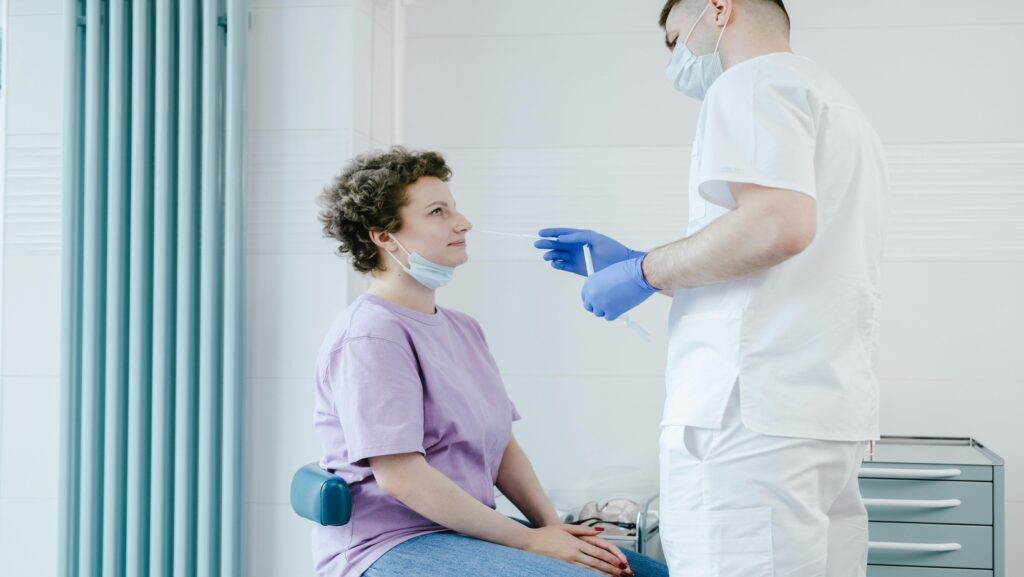Preventing Tonsil Regrowth: Can Tonsils Grow Back After being removed? – Tymoff

When it comes to health, it’s essential to stay informed. One question that often pops up is whether tonsils can grow back after being removed. Tonsillectomy, the surgical removal of tonsils, is a common procedure. However, there’s a bit of a medical mystery surrounding the possibility of tonsil regrowth.
The human body is known for its regenerative abilities. But do these abilities extend to our tonsils? This question has puzzled many patients who’ve undergone tonsil removal. Let’s delve into the science behind tonsillectomies and explore whether tonsils can indeed make a comeback post-surgery.
Can Tonsils Grow Back After Being Removed? – Tymoff
Contents
Burrowed deeply into the enigma of human biology is the question, Can Tonsils Grow Back After Being Removed? – Tymoff To satisfactorily respond to this, one needs a foundational understanding of what tonsils are, as well as a grasp of the details surrounding the procedure of tonsillectomy.
Understanding Tonsils

Tonsils, located at the back of your throat, are the body’s first line of defense in our immune system. Acting like nets, they trap incoming germs and bacteria before these invaders penetrate further into our body. This incredible biological feature is responsible for producing white blood cells and antibodies that combat infections. However, they could also be a source of discomfort leading to their removal via a surgical procedure known as tonsillectomy.
Tonsillectomy Procedure

An age-old medical procedure, tonsillectomy entails removing tonsils that are repeatedly infected, enlarged, or causing sleep issues such as sleep apnea. An ENT specialist or otolaryngologist carries out this surgery under general anesthesia and the
entire process takes about 30 to 45 minutes. After tonsillectomy, a patient is usually released from the hospital on the same day, unless complications arise.
The recovery process post-surgery generally takes about 1 to 2 weeks. Eating soft foods, drinking ample fluids, and taking pain medication as prescribed by the doctor lead to a smoother and more comfortable recovery.
Possibility of Tonsils Regrowth
Colorado-based Dr. Robert F. Yellon, a reputed board-certified pediatric doctor at the Children’s Hospital, remarked: “It’s extremely rare for tonsils to fully grow back after being removed.” For full tonsil regrowth, residual tonsil tissue must be left behind during surgery. Consequently, if one’s tonsils do regrow, it’s often partial and not quite the same as the original size or shape before the surgery.

Some estimates show that tonsil regrowth happens in less than one percent of patients post-tonsillectomy. These numbers highlight the relatively low possibility of tonsils growing back after being removed.
Multiple professionals hold a consensus that the actual rate of tonsil regrowth depends on the surgical technique used. The total removal of tonsils, as demonstrated by most surgeons, results in a very low likelihood of regrowth. However, a partial tonsillectomy meant to remove infected portions of tonsils can leave some tissue behind, creating a potential platform for possible regrowth.
The story of the human body and its regenerative abilities continues to intrigue the medical community. Armed with such knowledge, patients can engage more confidently in conversations about their health with professionals, leading to more informed decisions.
Thus, let’s delve deeper into this complex issue and explore the experiences of patients who have undergone tonsillectomy surgeries, and the primary reasons for a potential regrowth.
Factors Affecting Tonsil Regrowth
The chances of tonsil regrowth post-tonsillectomy may depend on a set of diverse factors. Here we’re going to explore some of the key elements that potentially influence this improbable outcome, starting with the age of the patient, followed by the surgeon’s technique, and finally, post-operative care.

Tonsil regrowth, though rare, is often associated with children more than adults. This is mainly due to children’s higher regenerative abilities. Their bodies are still in a state of growth, enhancing their tissue’s capacity to recover and regenerate. Therefore, there’s a slightly higher probability of tonsil tissue regrowth in children following a tonsillectomy.
The method used by the surgeon during the operation can significantly impact the possibility of tonsil regrowth. Total tonsillectomies, as opposed to partial
tonsillectomies, are linked with less likelihood of regrowth. In total tonsillectomies, the entire tonsil is removed, leaving little to no tissue that could potentially regenerate. However, with partial tonsillectomies, some tissue remains. This residual tissue could regrow over time if conditions permit, leading to a phenomenon known as “tonsil regrowth”.
Post-Operative Care
Once the tonsillectomy is completed, the post-operative care process plays an essential role. Ensuring proper care and maintaining stringent hygiene standards may reduce the chances of tissue regrowth.

This information continues to shed light on the intricacies of the human body’s regenerative abilities, particularly concerning tonsils, following a tonsillectomy. It’s not the end of the exploration, however. There are more aspects to consider, and each adds a unique dimension to understanding this complex topic. The next part of the article will delve into how, despite regrowth, the size and function of the tonsils may never return to pre-surgery norms.
On the flip side, negligence in post-operative care could encourage an environment conducive to tissue regrowth. In certain cases, infection or inflammation in the post-operative period may stimulate tissue growth. Therefore, paying due diligence to aftercare is recommended to minimize the chance of complications, including tonsil regrowth.
Surgical Procedure Related Factors
Top among the factors that regulate tonsil regrowth is the surgical procedure utilized. Not all tonsil surgeries are performed in the same manner. During a complete tonsillectomy, full tonsil removal is achieved. This procedure offers a reduced chance of regrowth compared to a partial tonsillectomy where only part of the tonsil is removed. The latter may increase the chances of regrowth due to the presence of remnants of tonsil tissue.
Lifestyle Factors

Another pivotal part of tonsil regrowth revolves around individual lifestyle habits. Regular exercise, complete rest, and a balanced diet can significantly aid the recovery and repair process of the body. These factors collectively boost the immune system which in turn helps in the regrowth of tonsils post-surgery. Contrarily, unhealthy lifestyle habits like smoking and alcohol consumption can impair the immune system and slow down the tonsil regrowth process.
Preventing Tonsil Regrowth
In the pursuit of preventing tonsil regrowth after a tonsillectomy, two key areas stand out as paramount: lifestyle changes and regular check-ups. While these might seem simple on the surface, they’re crucial to ensuring that the tonsils don’t make a comeback.
Lifestyle Changes
In-depth research suggests that the way a person lives their life can significantly affect tonsil regrowth. No, it’s not about climbing mountains or surfing waves, but rather about paying closer attention to personal hygiene, diet, and exercise habits.
Optimal oral hygiene is one of the leading factors in preventing tonsil regrowth. This includes brushing teeth regularly, using mouthwash, and generally maintaining cleanliness in the mouth area.

Doing so helps to prevent the development of harmful bacteria and other pathogens that could potentially stimulate tonsil tissue to regrow.
Moreover, a healthy diet packed full of vitamins and minerals is essential in the fight against tonsil regrowth. Foods rich in Vitamin A, C, and E, calcium, and zinc are particularly beneficial. Regular exercise has also been shown to boost immune system function, which in turn can help ward off infections that could prompt tonsil regrowth.
- Brush your teeth and floss regularly
- Have a diet rich in Vitamins A, C, E, calcium, and zinc
- Exercise regularly
Regular Check-ups
The importance of regular medical check-ups can’t be overstated when it comes to preventing tonsil regrowth. Regular visits to an otolaryngologist (that’s a fancy word for an ear, nose, and throat doctor) are recommended for those who’ve had a tonsillectomy.

During a routine check-up, the doctor will examine the throat closely to monitor for any signs of tonsil regrowth. Thus, ensuring any potential signs are caught early and managed appropriately. These check-ups are integral to maintaining the results of a successful tonsillectomy as they provide an opportunity for any issues to be addressed as soon as they’re noticed.
In addition, if there are any signs of a sore throat developing, regardless of whether it seems minor, it’s crucial to get it checked. A sore throat may seem innocent, but if left untreated, it could potentially trigger tonsil regrowth.

Remember, prevention is always better than cure.
- Regular check-ups with an otolaryngologist
- Prompt attention to any throat discomfort or abnormalities
So, taking the appropriate preventative measures and being proactive in self-care and medical visits can significantly reduce the chances of tonsil regrowth. This matters because maintaining proper throat hygiene may not only prevent tonsil regrowth but also foster a greater sense of overall health and wellness.
Post-Tonsillectomy Care Tips
Proper aftercare is crucial in the preventative measures against tonsil regrowth following a tonsillectomy. Here are some of the tips that can be conducive to an effective healing process:

- Hydration: Keeping the throat hydrated is important. It aids in the healing process and decreases the risk of infection. One ought to drink plenty of fluids – preferably water.
- Rest: It’s consequential to understand that the healing process may take two weeks or more. During this time, rest is key.
- Medication: Adherence to prescribed medication is paramount. This will help in managing the pain and mitigating the risk of infection.
- Avoid trauma: One should avoid any activities that might cause trauma to the throat area such as shouting, hard coughing or violent sneezing.
Taking these steps may dissuade regrowth by creating an environment that promotes healthy healing of surgically excised areas.
All You need to know
can tonsils grow back after being removed? – tymoff. It’s a scenario that can be effectively managed with the right lifestyle changes and medical vigilance. Regular otolaryngologist visits and prompt attention to throat discomfort are key in early detection of regrowth signs. The adoption of optimal oral hygiene practices, a nutrient-rich diet, and regular exercise can deter tonsil regrowth. By staying proactive and vigilant, one can significantly reduce the likelihood of tonsil regrowth, ensuring better throat health and overall well-being. Let’s remember, prevention is better than cure. So, let’s adopt these preventive measures and enjoy a healthier, tonsil-regrowth-free life.

Founded by Sophia Rodriguez, IGXO Cosmetics is a PETA-certified, cruelty-free, and vegan makeup brand.





